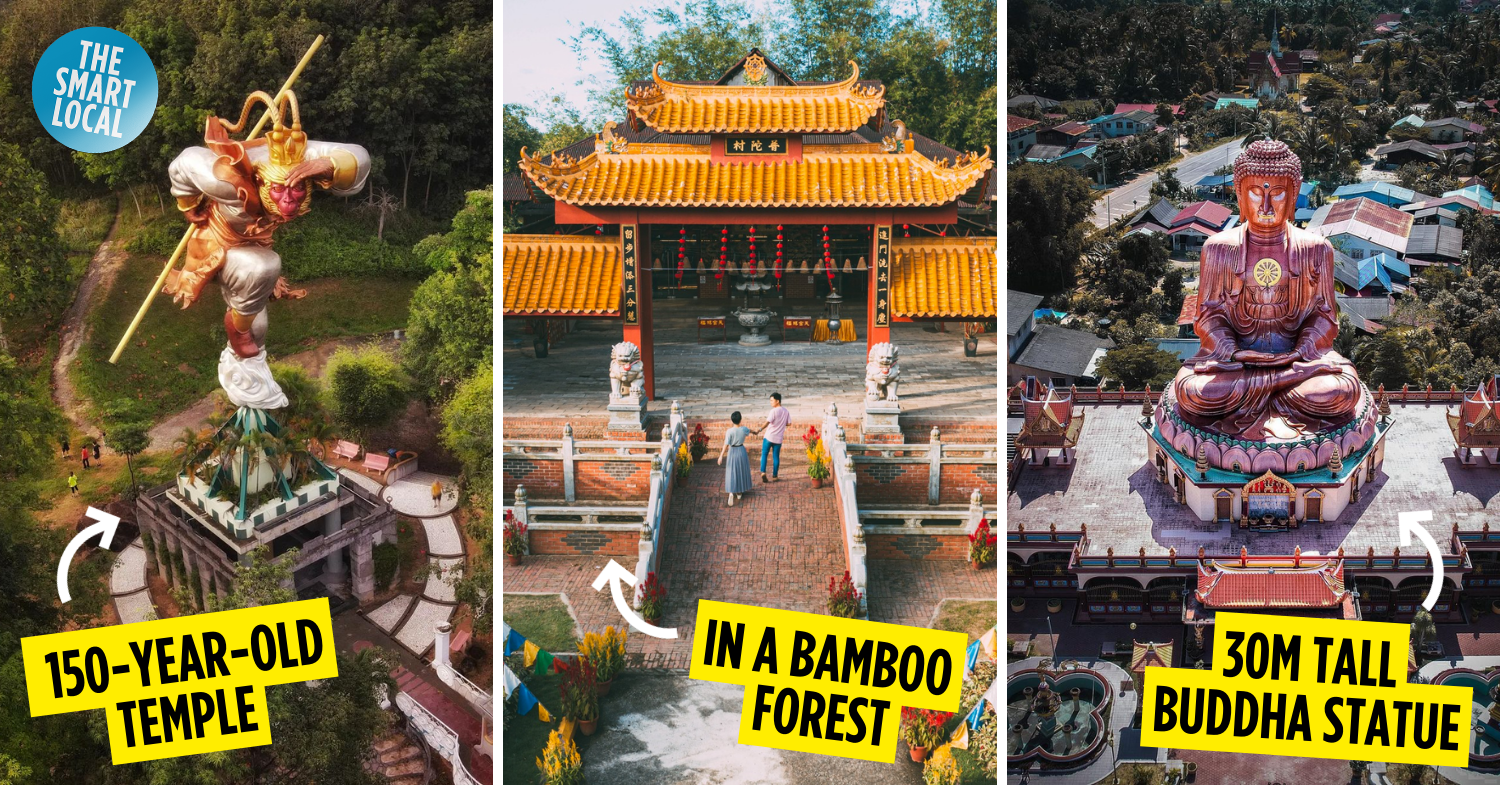Chinese temples in Malaysia
Malaysia is a top destination to visit in Southeast Asia if you’re a culture buff. With several religions widely practised in our little corner of the world, there are a good number of places of worship in the country that’ll give you a good look into local culture. Alongside the stunning mosques and Hindu temples that the country is known for, Chinese temples in Malaysia serve as important sites for the local community.
We rounded up some unmissable ones to visit that boast stunning architecture and unique features like free-roaming snakes, dragon tunnels, and more.
Table of Contents
- Chinese temples in Malaysia
- What are the most famous Chinese temples in Malaysia?
- What are the different types of Chinese temples in Malaysia?
- 1. Sin Sze Si Ya Temple
- 2. Sak Dato Temple
- 3. Fortune Dragon Temple
- 4. Putuo Village
- 5. Tua Pek Kong Temple
- 6. Snake Temple
- 7. Wat Machimmaram
- 8. Yue Shan Gu Miao Temple
- 9. Chin Swee Caves Temple
- 10. Perak Cave Temple
- 11. Puu Jih Shih Temple
- 12. Kek Lok Si Temple
- 13. Thean Hou Temple
What are the most famous Chinese temples in Malaysia?
There are hundreds of Chinese temples situated across Malaysia, from quiet villages to the urban city centres. But some have risen to popularity among locals and tourists alike, due to their must-see architectural features and status as hubs for cultural celebrations and events.
Well-known examples like Thean Hou Temple in Kuala Lumpur and Kek Lok Si Temple in George Town stand as landmarks in their respective cities for having stunning light-ups during festivities such as the Chinese New Year. Likewise, spots such as Penang’s Snake Temple and Johor’s Putuo Village have become popular sightseeing spots for boasting unique aspects like free-roaming snakes and a bamboo forest.
What are the different types of Chinese temples in Malaysia?
Chinese temples in Malaysia vary in size and religious affiliation, with Buddhism and Taoism being the most common. Each temple is typically dedicated to Buddha and deities like Tua Pek Kong and Guan Yin, with large shrines dedicated to them at temples.
Beyond just being sites for prayers and rituals, Chinese temples also function as event spaces, hosting communal gatherings and services such as fortune-telling in Malaysia.
1. Sin Sze Si Ya Temple
KL’s oldest Taoist temple
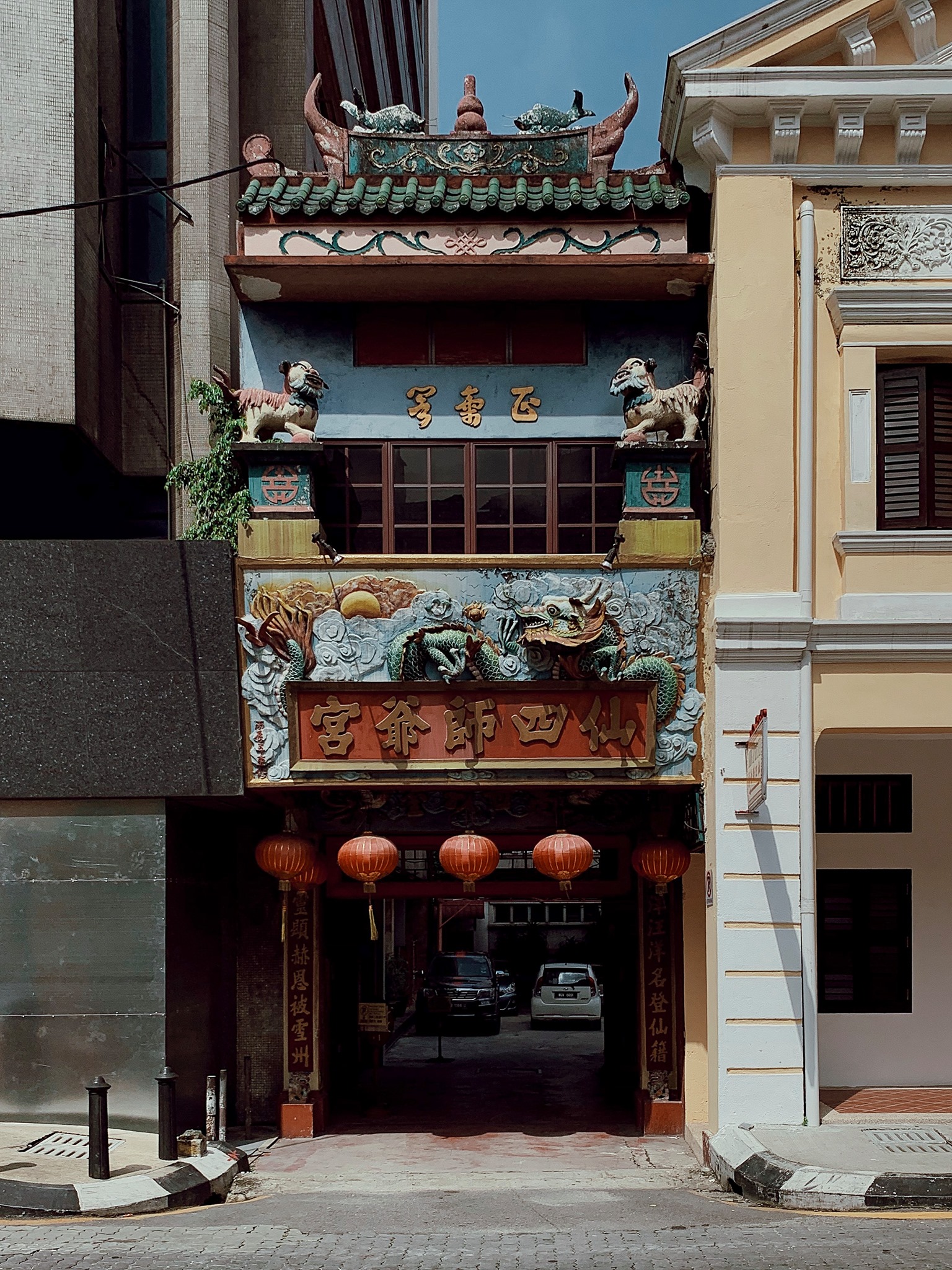
Image credit: Sin Sze Si Ya Temple via Facebook
Just a stone’s throw from KL’s bustling Central Market, Sin Sze Si Ya Temple stands as the city’s oldest Taoist temple. It was founded in 1864 by the notable Kapitan Yap Ah Loy, who dedicated the temple to two deities who protected him during the Selangor Civil War.
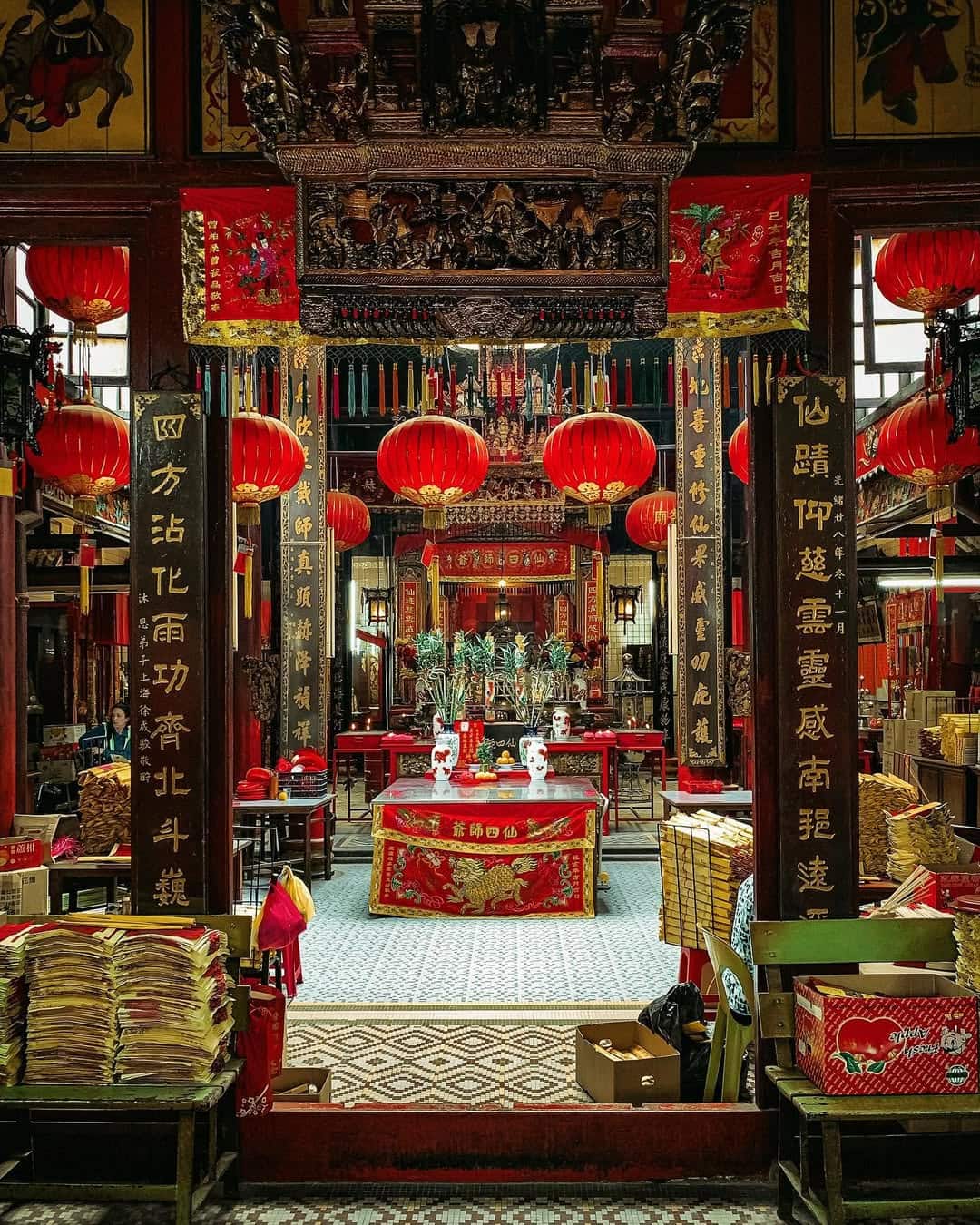 Image credit: @amsyarnaaif via Instagram
Image credit: @amsyarnaaif via Instagram
Don’t be fooled by the temple’s demure facade, with its entrance wedged between two typical KL shophouses.
Its deceivingly narrow entryway leads into a spacious courtyard with several halls that accommodate daily worship offerings and larger festive activities. Many visitors also seek out fortune readings at the temple.
Address: 113A, Jalan Tun H S Lee, City Centre, 50050 Kuala Lumpur, Wilayah Persekutuan Kuala Lumpur
Opening hours: 7am-5pm, Daily
2. Sak Dato Temple
A massive Monkey King statue
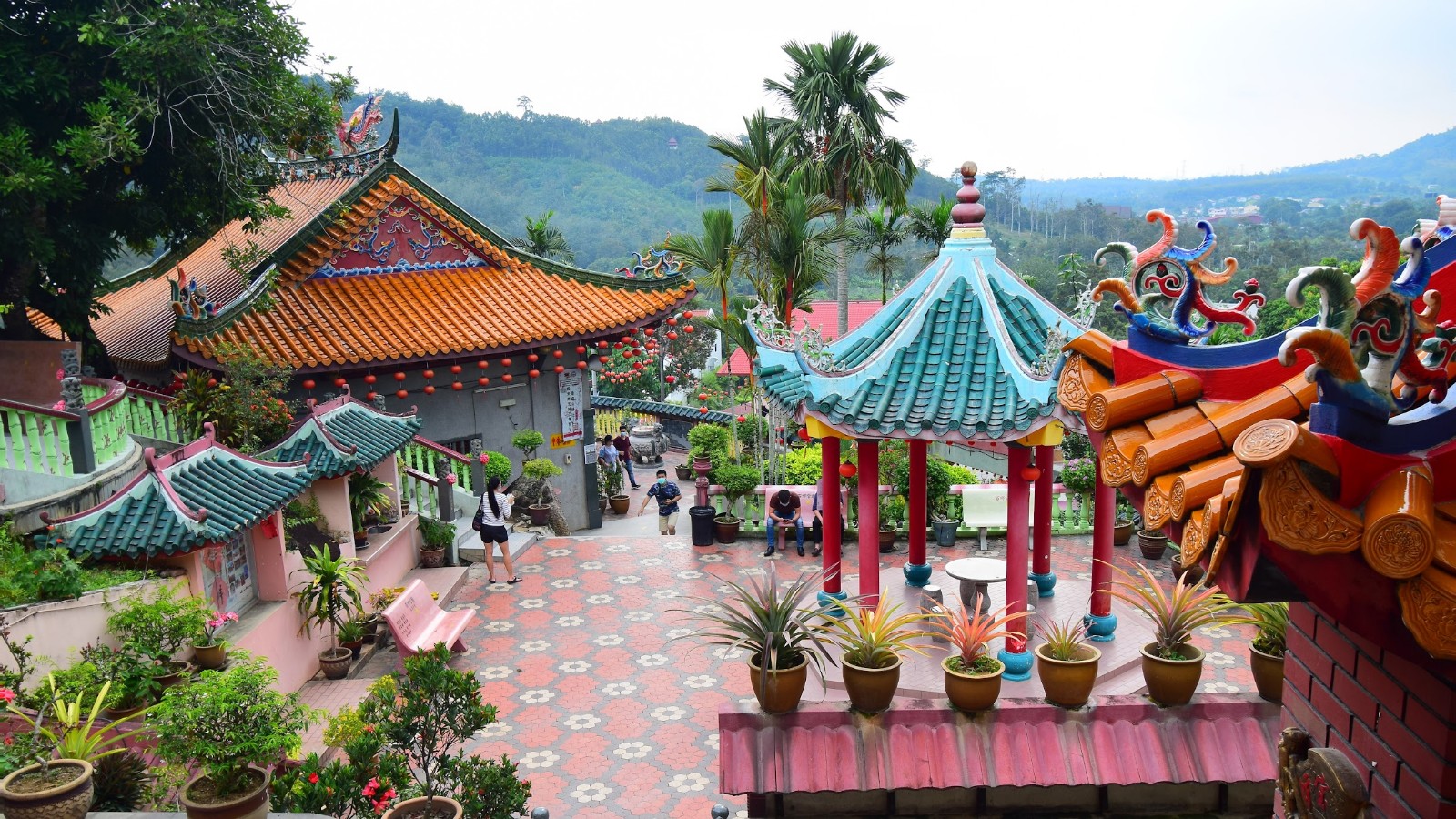
Image credit: Paul Lim via Google Reviews
Sak Dato Temple, near Semenyih’s popular Broga Hill, is almost a staggering 150 years old. It houses several shrines and statues of deities and mythical figures in its serene garden space.
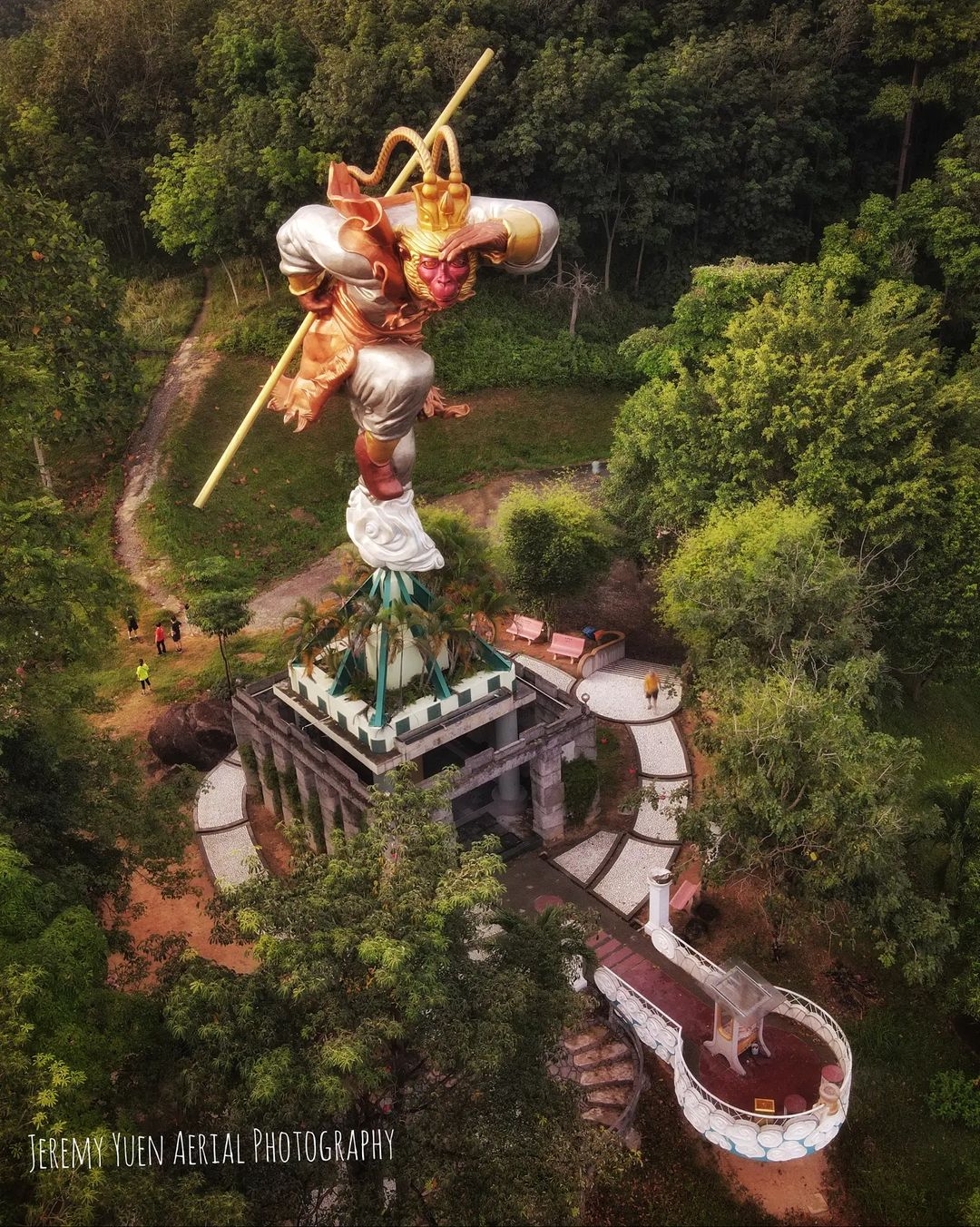
Image credit: @kaionn.75 via Instagram
But the huge 15-metre-tall statue of Monkey King, or Sun Wukong, is the scene-stealer – it’s said to be the largest statue of the mythical figure in Malaysia.
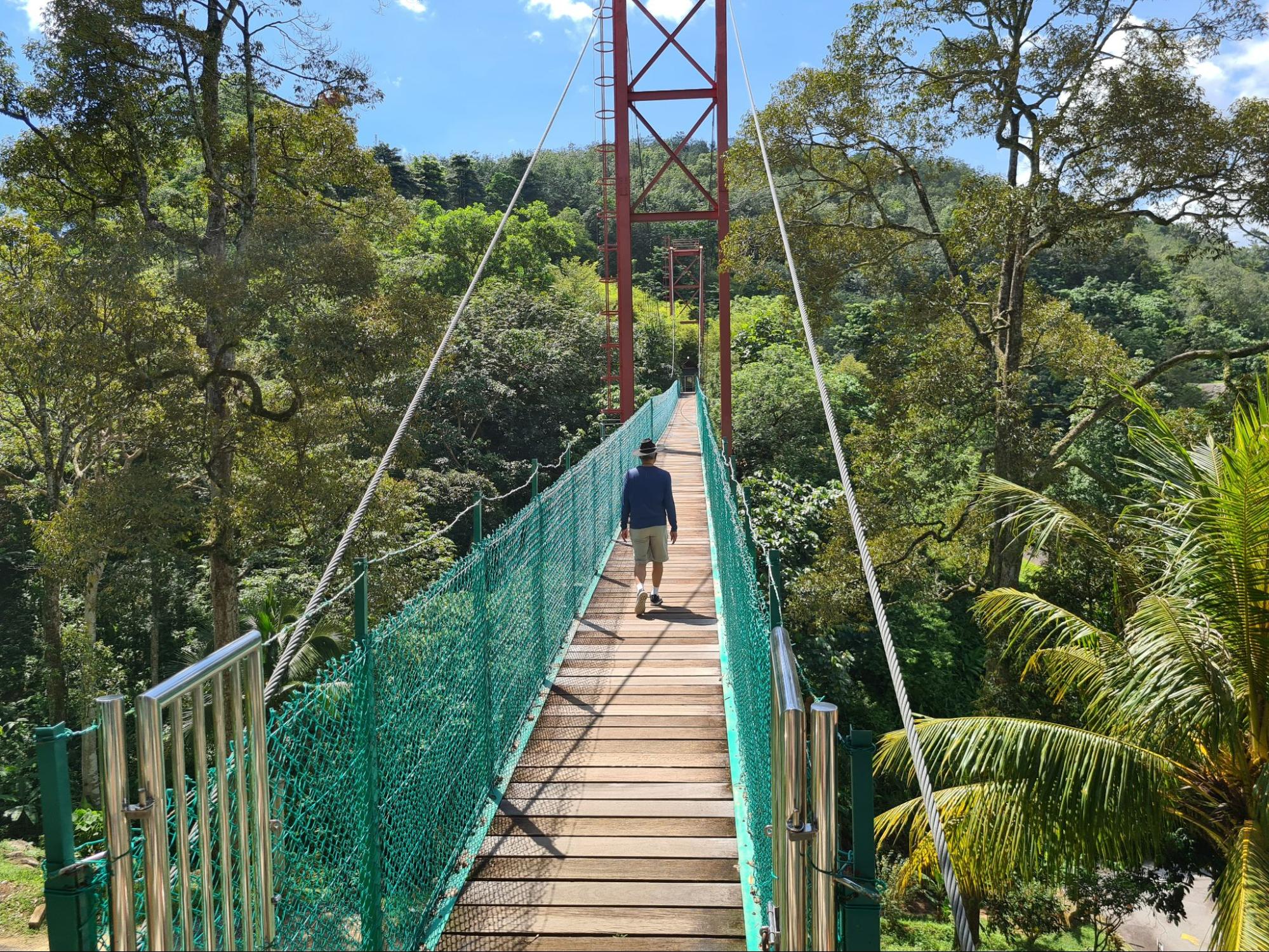
Image credit: c ph via Google Reviews
Besides marveling at the various temple structures, you can stroll across a 103-metre-long suspension bridge over a valley to enjoy the lush greenery that envelops the temple.
Address: No. 4, Jalan Besar, Broga, 71750 Semenyih, Negeri Sembilan
Opening hours: Mon-Sat 10am-6pm | Sun 8am-6pm
3. Fortune Dragon Temple
A 115-metre-long dragon tunnel
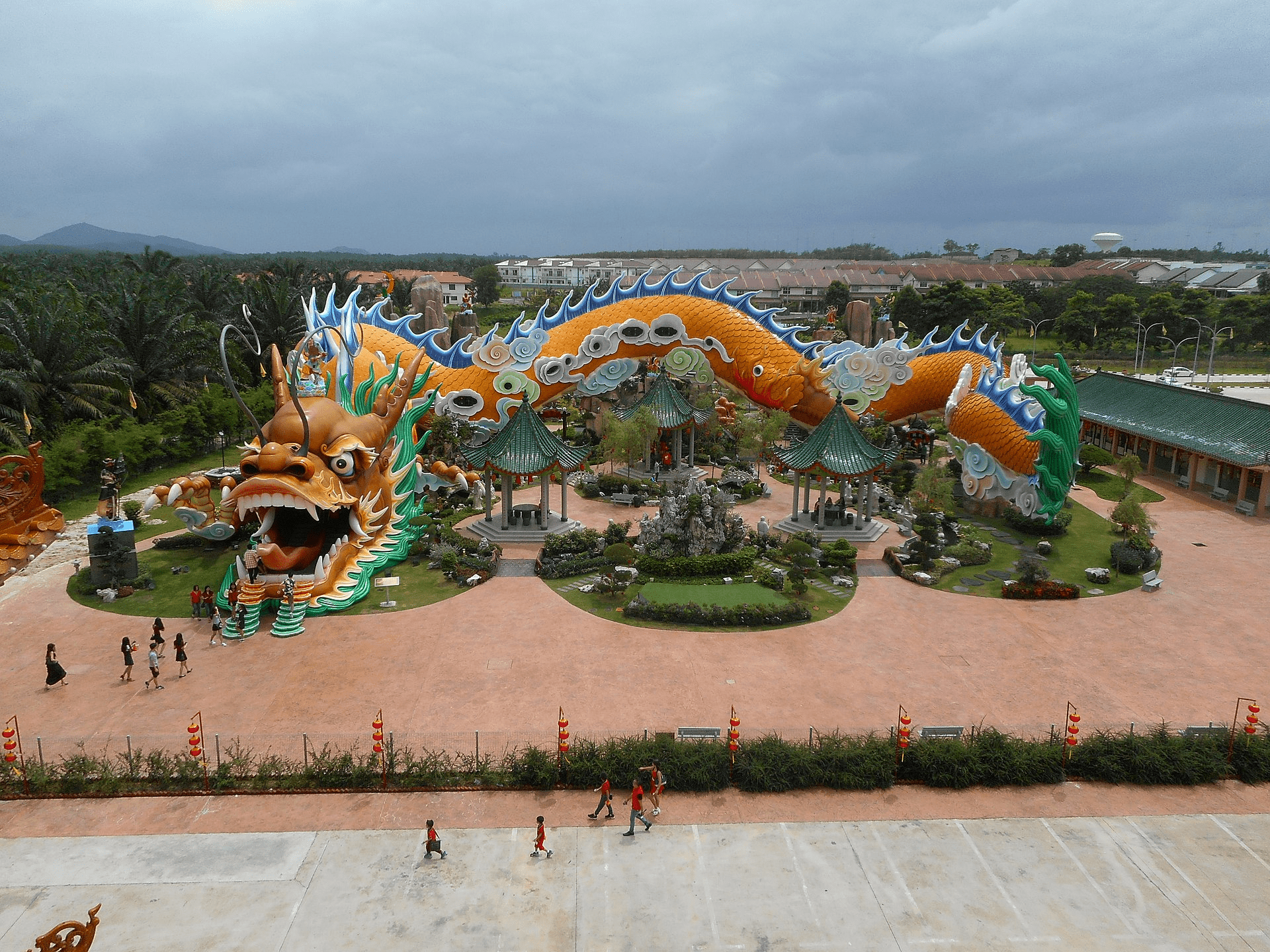
Image credit: Wikimedia Commons
There are plenty of standout places of worship in Johor. Besides being home to the world’s first glass Indian temple, the state is also home to a Chinese temple with one of the largest and longest dragon tunnels in the world – Fortune Dragon.
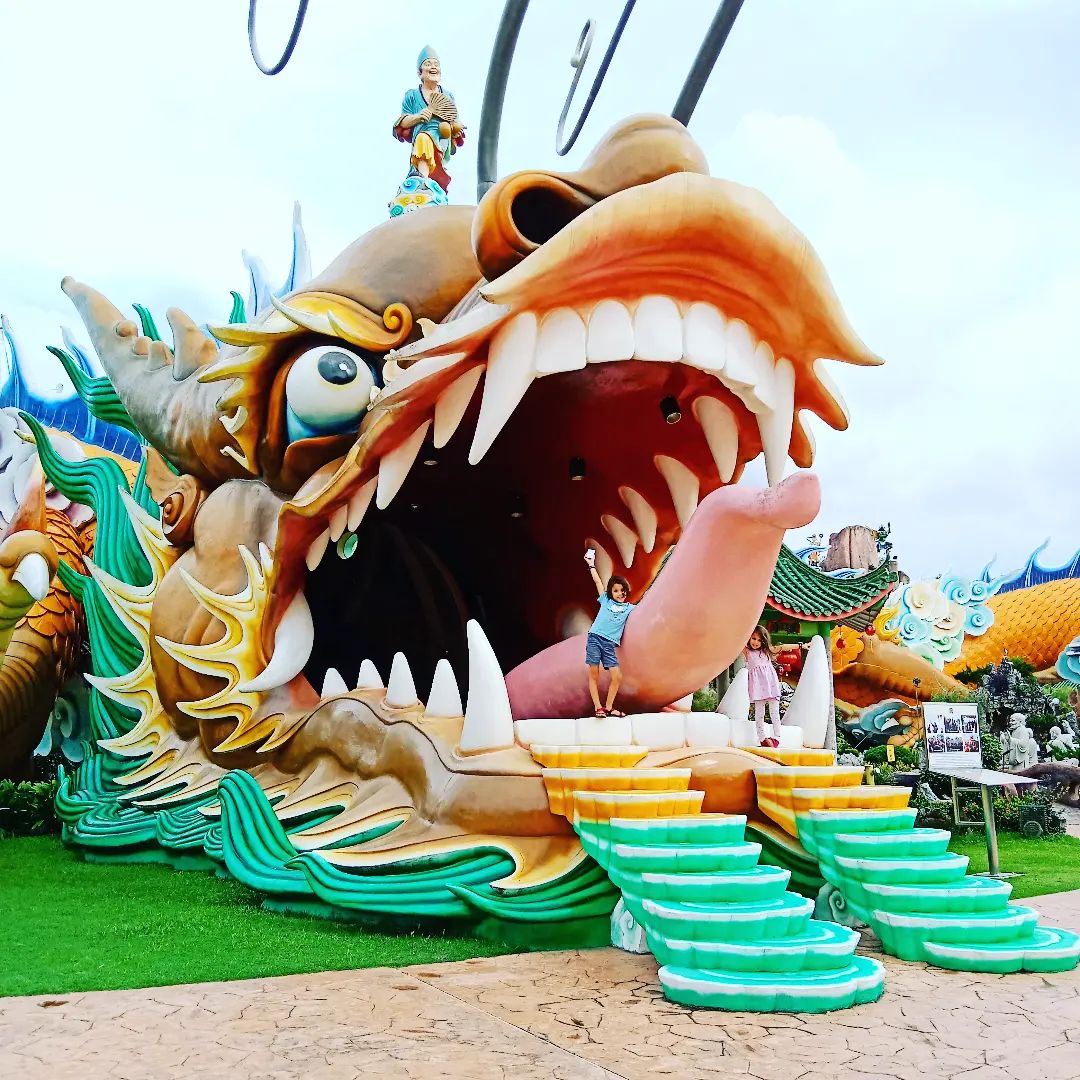
Image credit: @kenshoquest via Instagram
Built in 2016 with an estimated budget of RM6 million, the temple in Yong Peng has a massive 115-metre-long tunnel in the form of a dragon. Visitors will enter the tunnel from the dragon’s mouth and exit from its tail, viewing traditional Chinese paintings depicting various Chinese folktales and tales of the afterlife inside the dragon’s “belly”.
Address: Lot HS 2677, Pt 2446, Jalan Kota Impian 1, 83700 Yong Peng, Johor
Opening hours: 8.30am-9pm, Daily
4. Putuo Village
The largest indoor Guan Yin statue
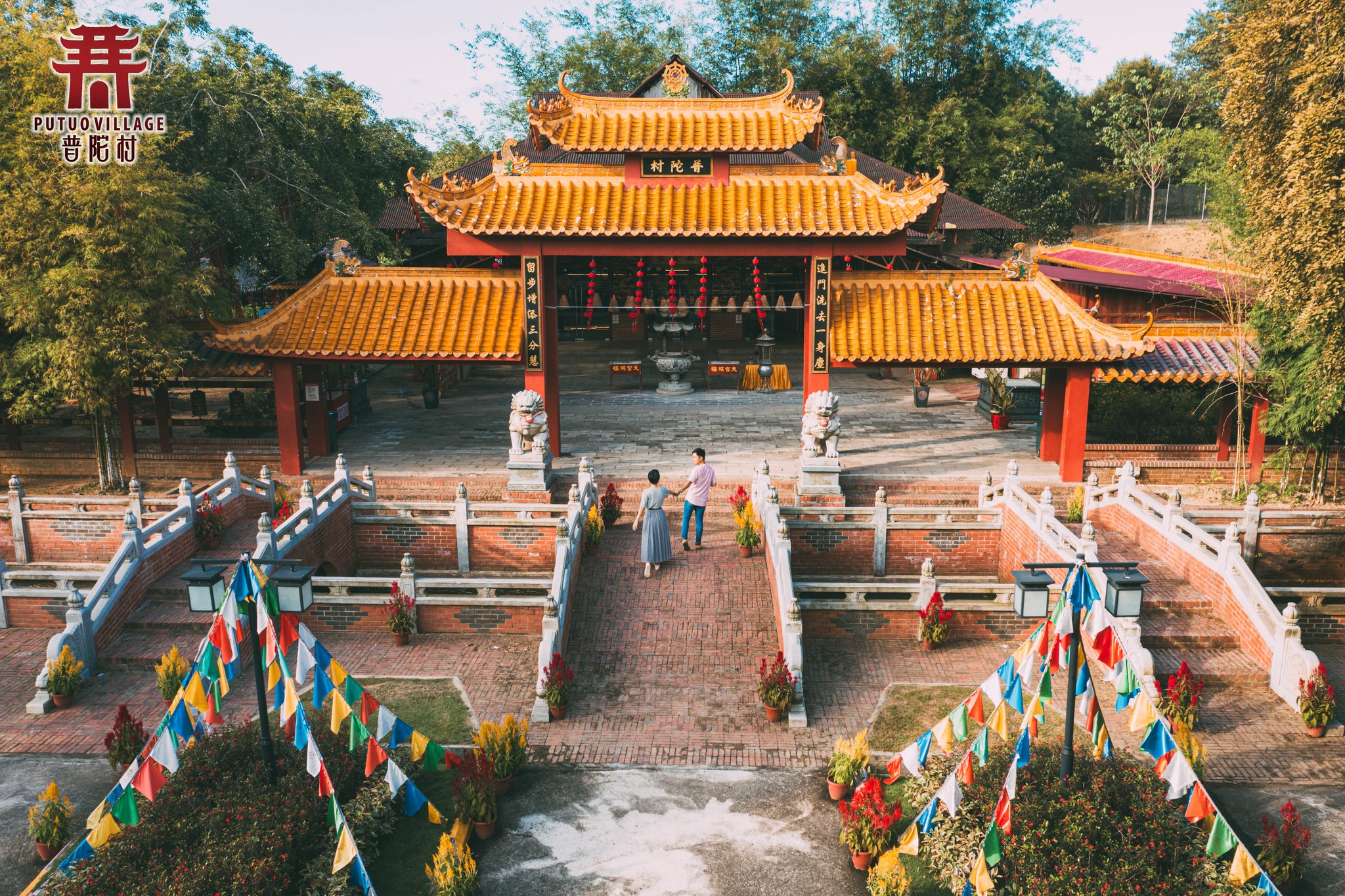
Image credit: Putuo Village 普陀村 via Facebook
Unlike most temples perched on hilltops, Putuo Village in Johor is a Buddhist heritage site in a bamboo forest, which spans 40 acres of land. It’s become a tourist magnet, welcoming both devotees and non-devotees alike to explore its grounds and various photo-worthy features like a huge hanging bird’s nest and giant inflatable pandas.
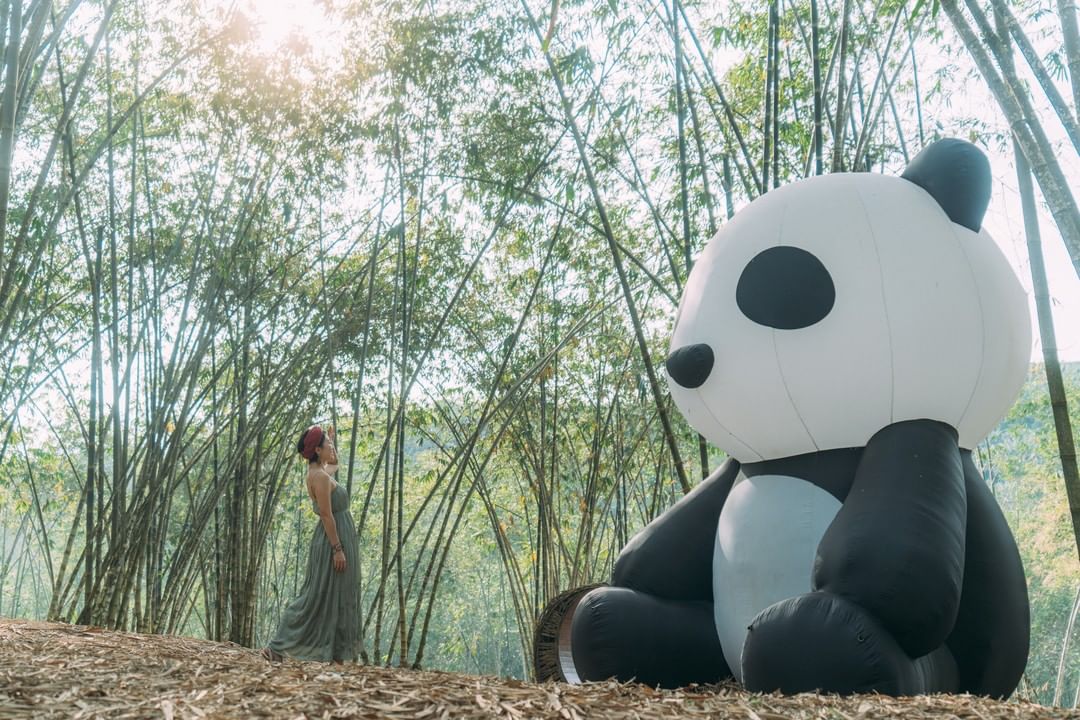
Image credit: @putuovillage via Facebook
The massive statue of the goddess Guan Yin here is known to be the largest one in Southeast Asia yet.
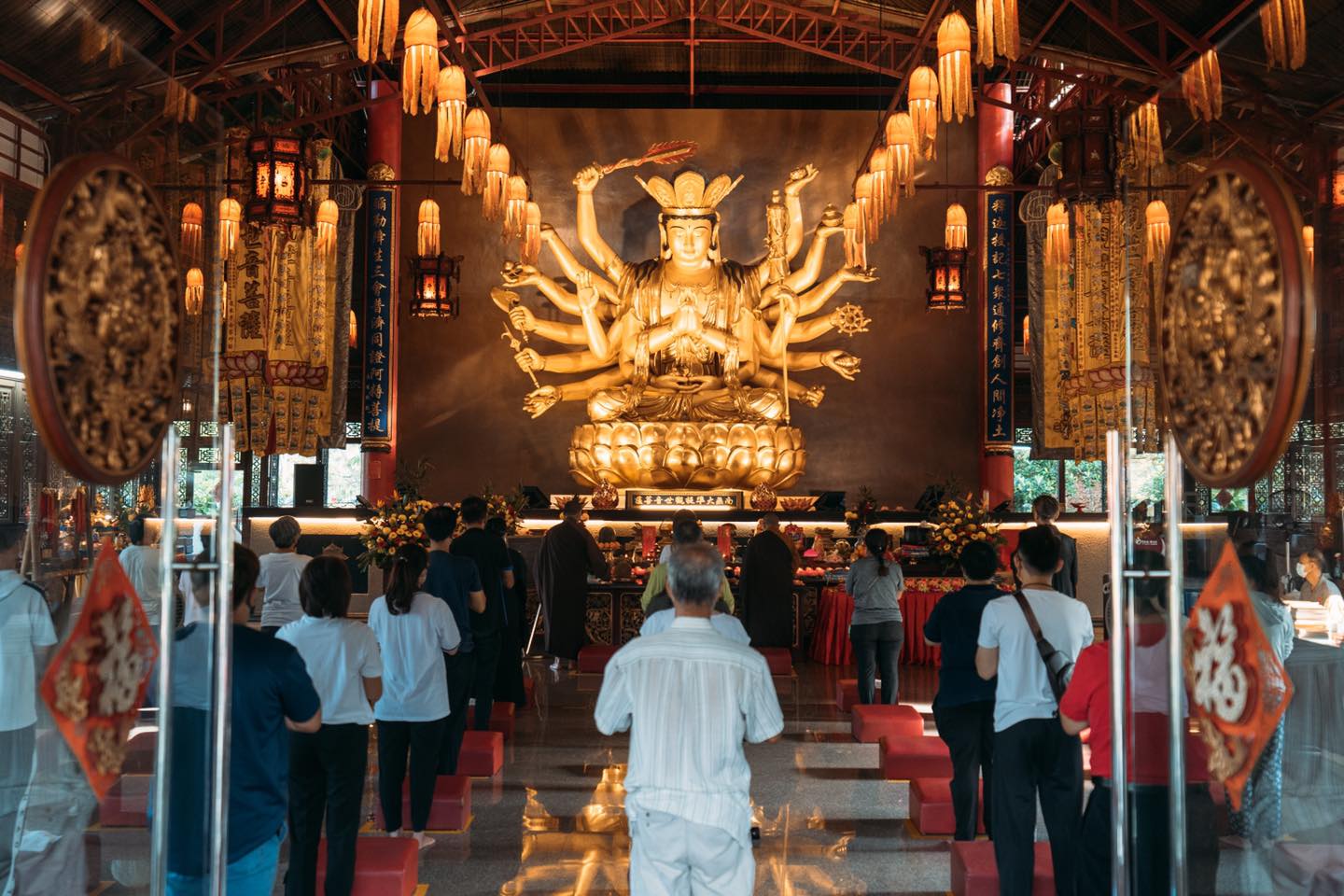
Image credit: Putuo Village 普陀村 via Facebook
The temple also plays host to important Buddhist festivals including the celebration of Avalokitesvara Day, the bathing of the Buddha statue, and the tossing of a treasure sign at a Wishing Tree.
Address: 1488, Jalan Kampung, off Jalan Kota Tinggi, Kluang, Felda Taib Andak, 81000 Kulai, Johor
Opening hours: 9am-6pm, Daily
5. Tua Pek Kong Temple
White stone statues of Buddhist & Taoist icons
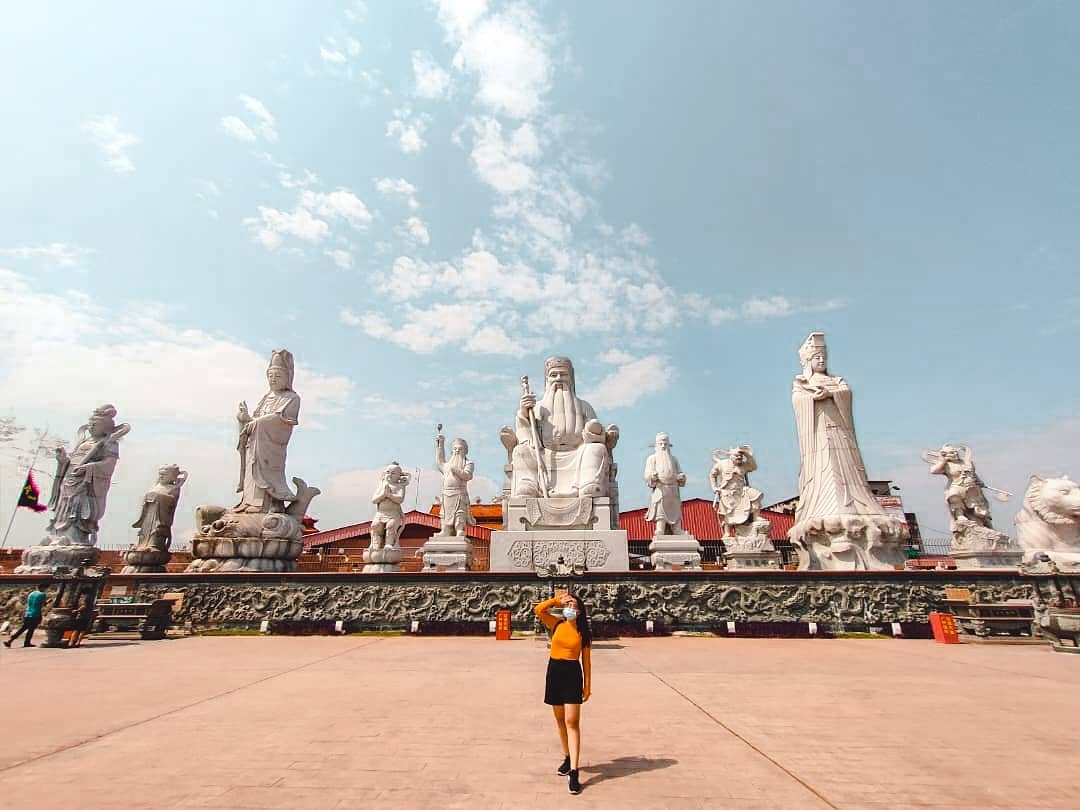 Image credit: @flogeduin via Instagram
Image credit: @flogeduin via Instagram
Tua Pek Kong Temple in Perak is one of the few Chinese temples in Malaysia that sits next to the sea instead of on a hill. Located in the coastal area of Pasir Panjang, the picturesque temple features several white stone statues of Buddhist and Taoist icons, with the biggest of them all dedicated to Tua Pek Kong which sits at the centre of the platform.
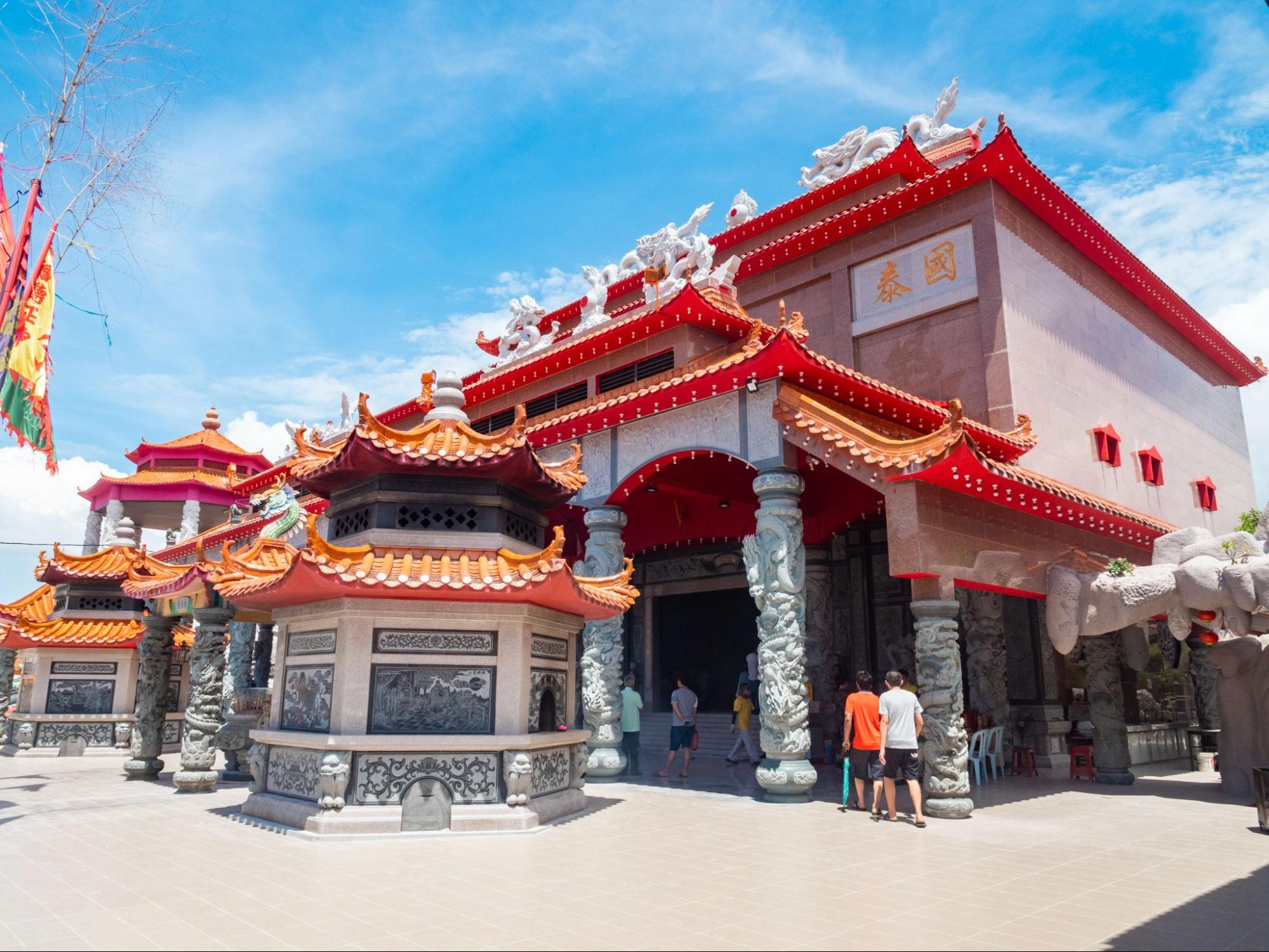
Image credit: Martin Tang via Google Reviews
Said to be over 100 years old, the temple has gone through changes in recent years, with new additions like a pagoda and dragon tunnel offering more backdrop options for pictures besides the stunning statues.
Address: Jalan Pasir Panjang, 32000 Sitiawan, Perak
Opening hours: 7am-10.30pm, Daily
6. Snake Temple
Free roaming snakes
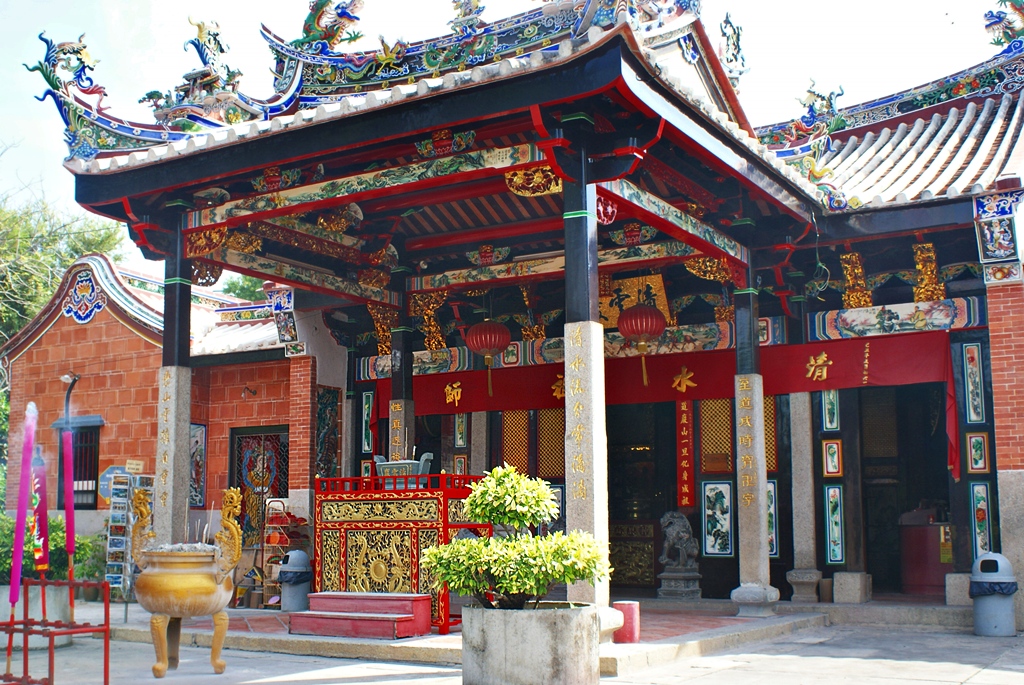
Image credit: Wikimedia Commons
Visiting a temple with free-roaming snakes may sound like something only out of an Indiana Jones movie. But there’s one such place of worship in Penang that lets you experience this – Snake Temple in Bayan Lepas. It houses a good number of these reptiles, including pit vipers, green tree snakes, and pythons that have been defanged and are said to be harmless.
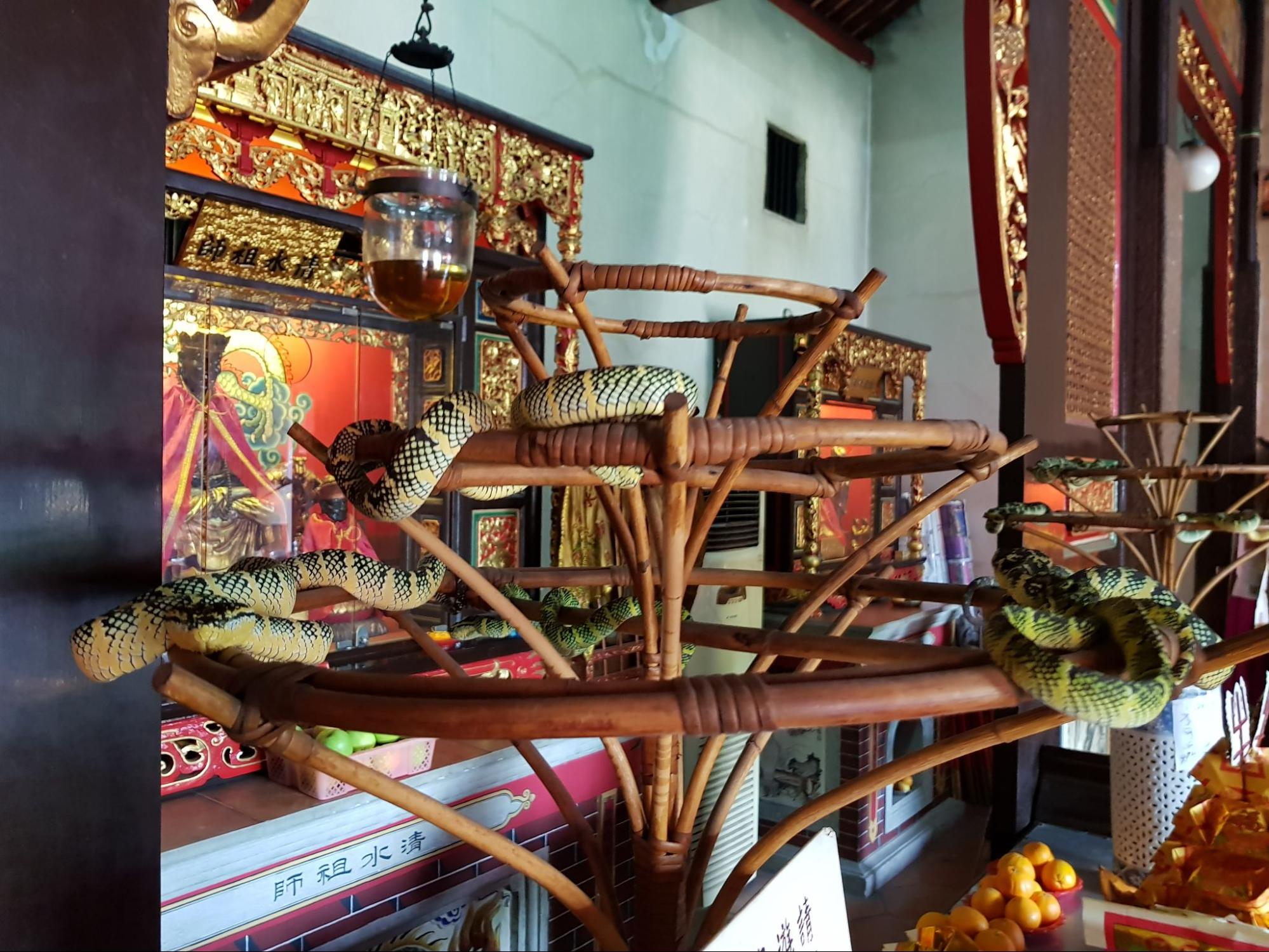
Image credit: Kin Hoong Hung via Google Reviews
Also referred to as the Temple Of The Azure Clouds, the temple was built sometime in the 1850s, in honour of Buddhist monk Chor Soo Kong who was said to have snakes as his disciples. As a tribute, uncaged snakes slither free on branches inside the prayer halls and on trees in the garden.
Address: Jalan Sultan Azlan Shah, Bayan Lepas Industrial Park, 11900 Bayan Lepas, Penang
Opening hours: 7am-7pm, Daily
7. Wat Machimmaram
One of the largest sitting Buddha statues in Southeast Asia
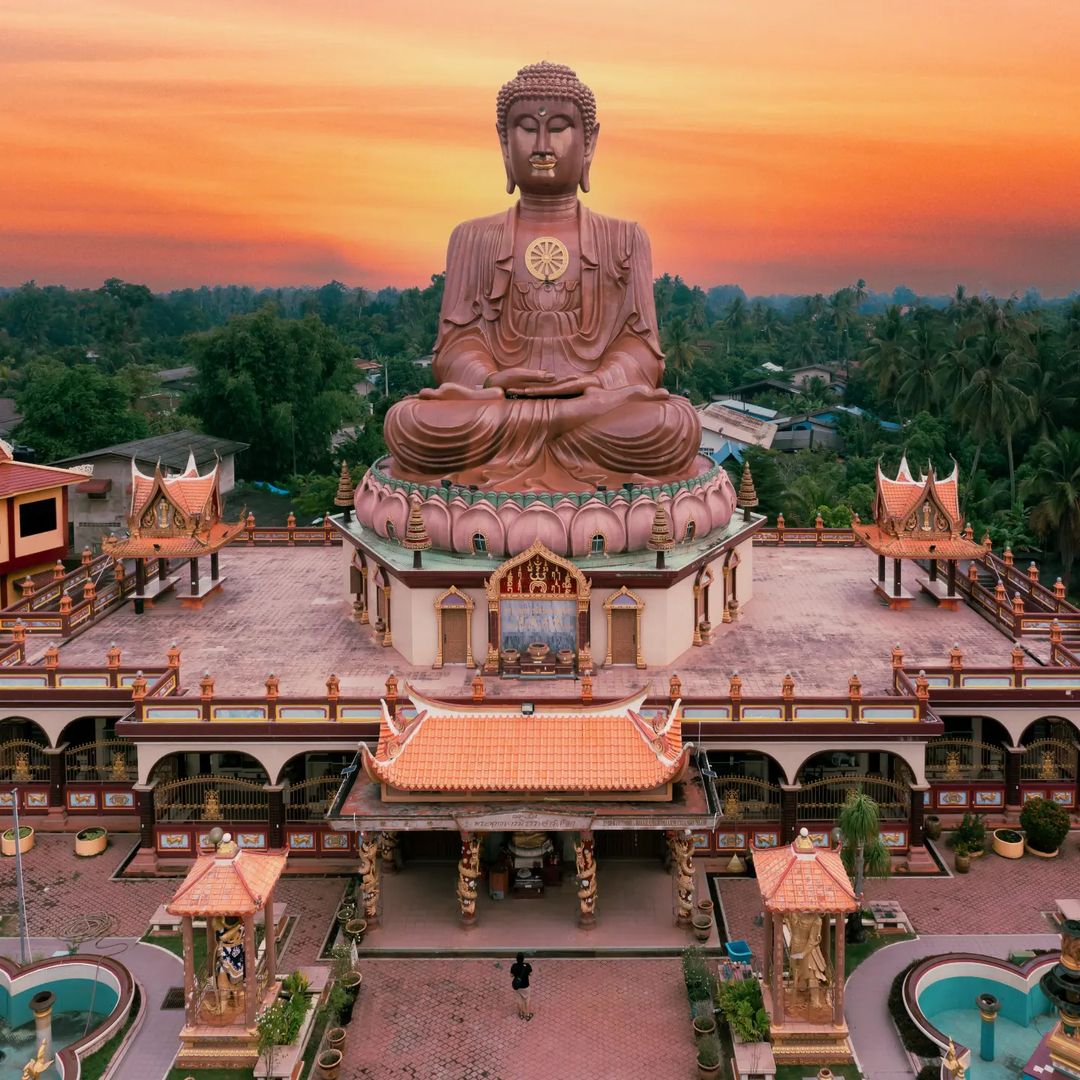
Image credit: @stevenng92 via Instagram
Kelantan is widely considered to be an Islamic state in Malaysia, with a majority of its population being Muslims. But the state’s Tumpat district has a strong Buddhist influence with the presence of over 20 Chinese temples with impressive architecture there, including the eye-catching Wat Machimmaram.
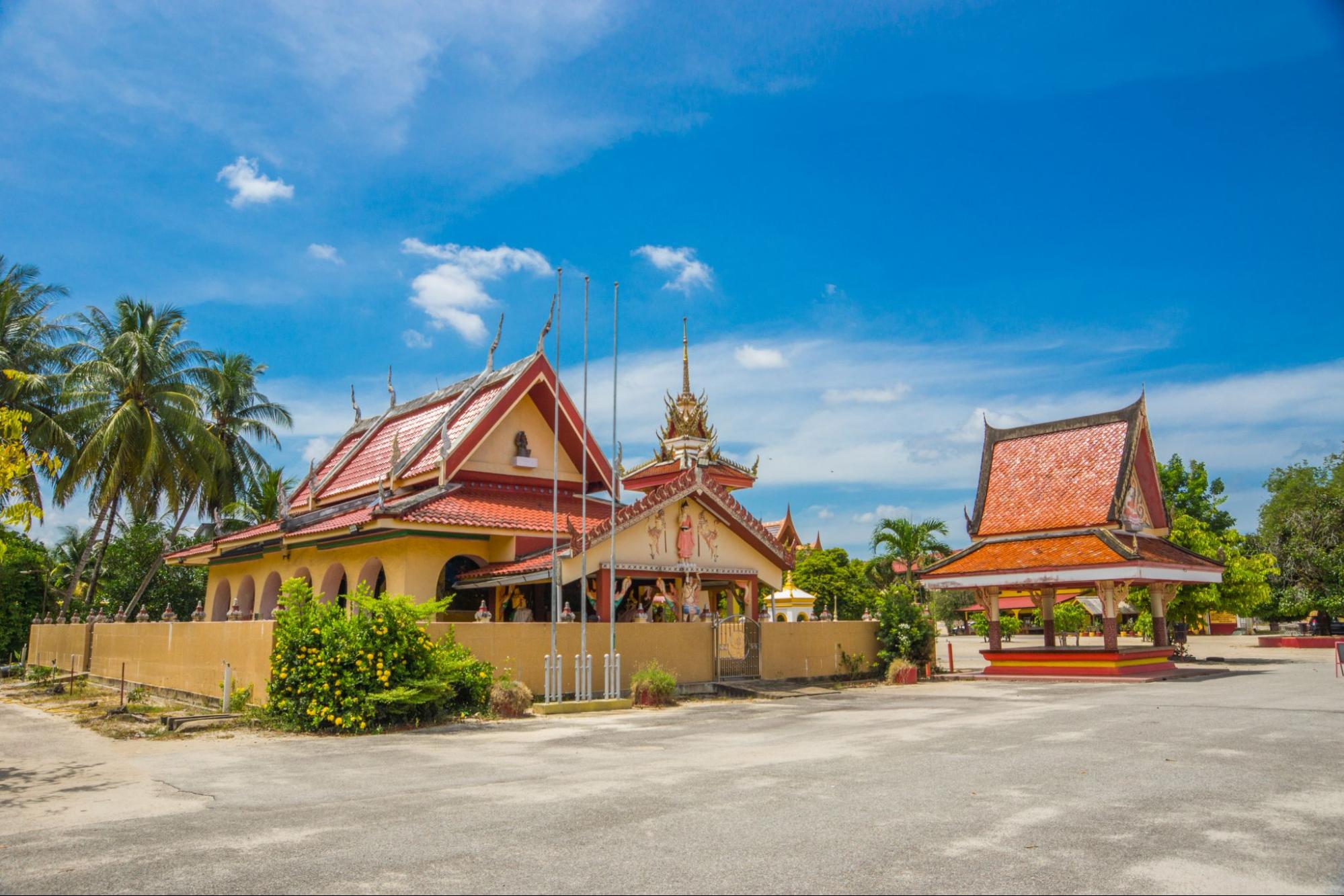
Image credit: Kok zi hao via Google Reviews
As the Tumpat district borders Thailand on the west, the temple serves as an important religious site for the Thai-Buddhist community here. Its massive statue of a seated Buddha on a lotus, found on the temple’s roof, is a major draw for visitors. It’s one of the largest in Southeast Asia, measuring a whopping 30 metres tall and 47.5 metres wide.
Much of the exterior decor, including the Buddha statue, is painted in brown and copper, distinguishing it from traditional Chinese temples in red.
Address: Kampung Jubakar, 16210 Tumpat, Kelantan
Opening hours: 9am-5pm, Daily
8. Yue Shan Gu Miao Temple
Colourful rainbow stairs
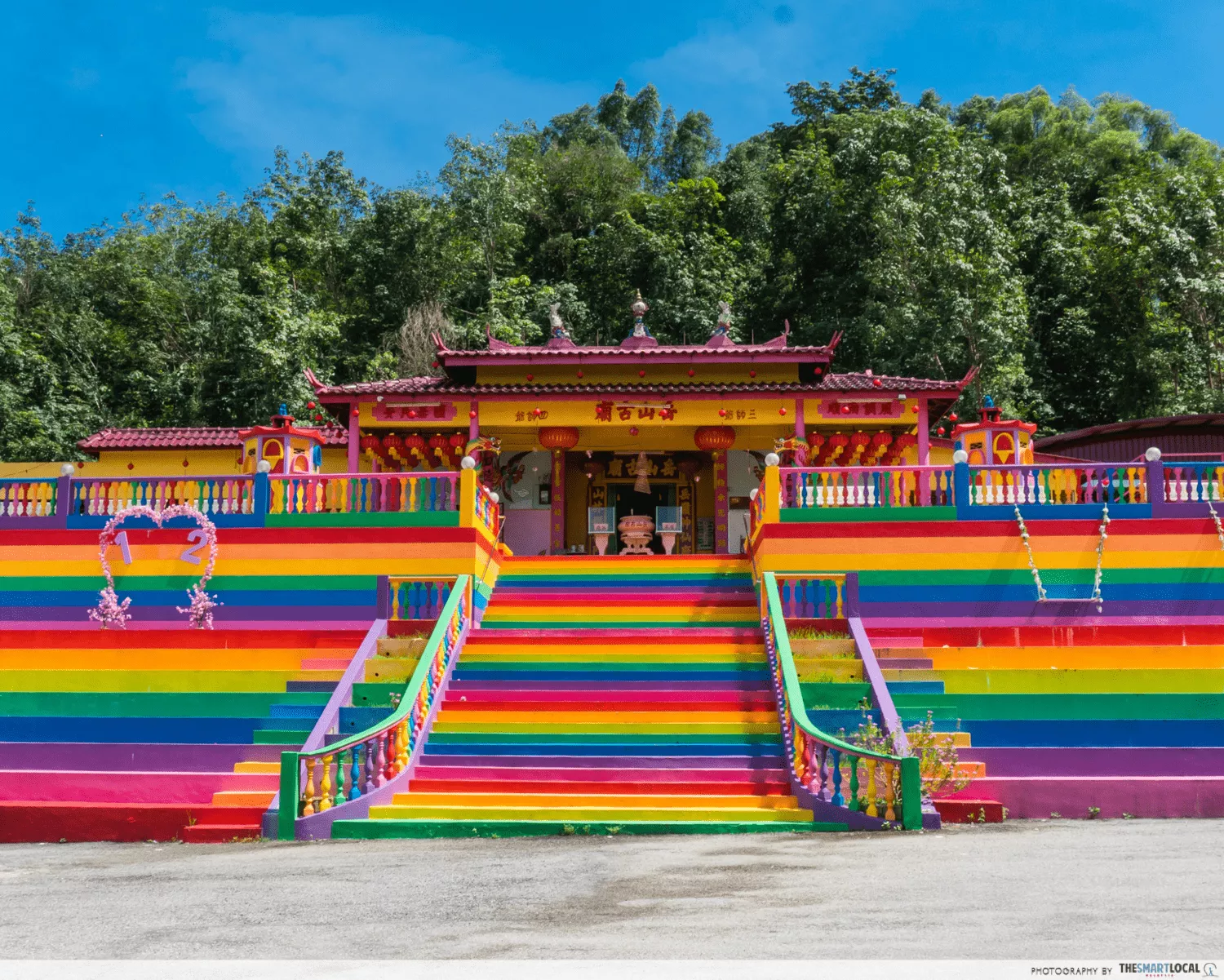
If you want to marvel at a pop of colours, then a visit to Yue Shan Gu Miao Temple in Kuala Kubu Bharu is a must. Red is highly symbolic in Chinese culture and temples due to its association with joy, happiness, and luck, but a rainbow stairs happens to lead up to this lesser-known temple.
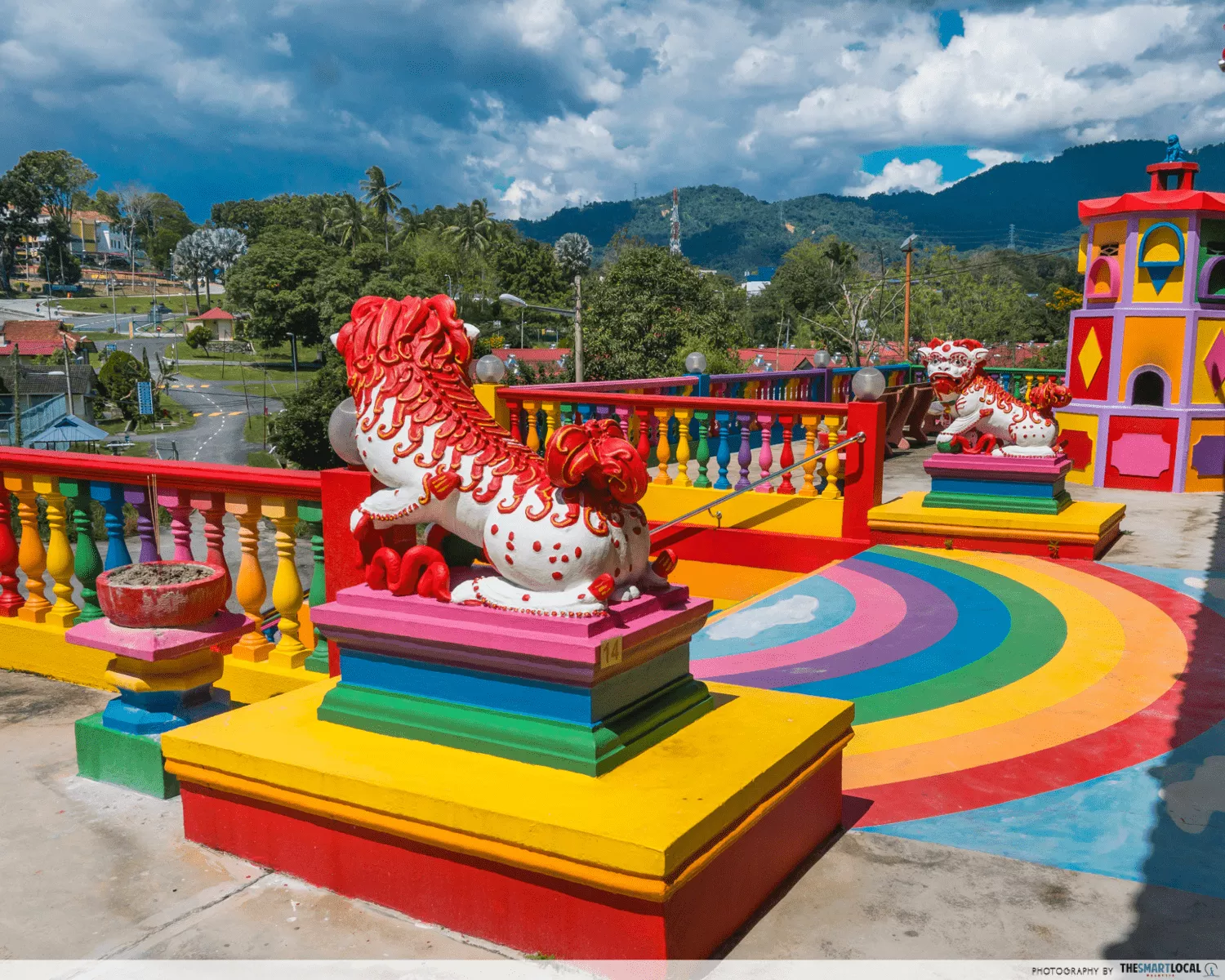
Like many Chinese temples in Malaysia, the Kuala Kubu Bharu temple has a long history, dating way back to the 19th century. It’s been gaining more attention in recent years, thanks to its cheery makeover.
Address: Jalan Kubu, Kampung Sungai Damar, 44000 Kuala Kubu Baru, Selangor
Opening hours: 24 hours, Daily
9. Chin Swee Caves Temple
Located 1,400 metres above sea level
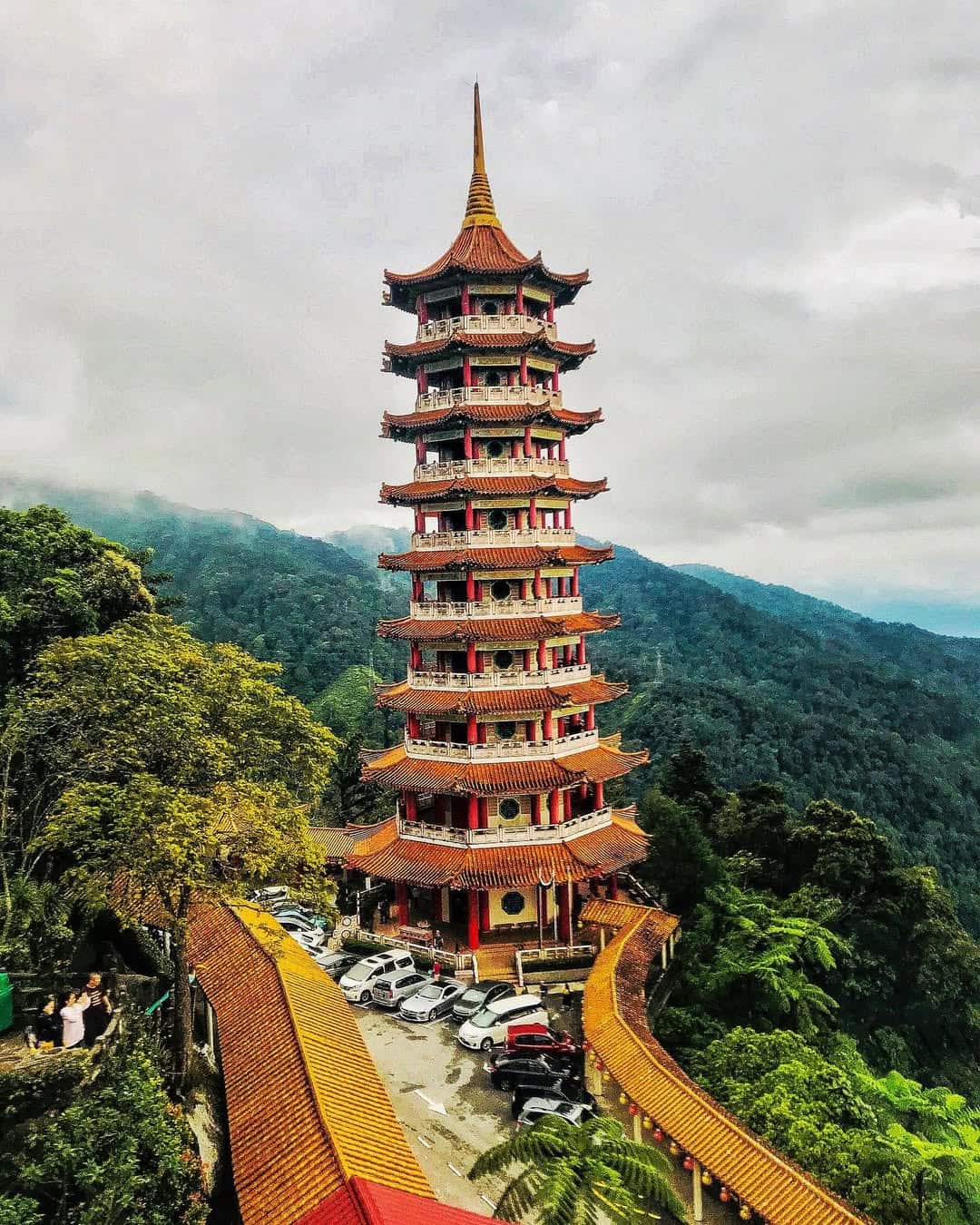
Image credit: @thewanderercoupleofficial via Instagram
Those who’ve made a trip to Genting Highlands before have likely seen Chin Swee Caves Temple. Situated 1,400 metres above sea level, the 24-acre Buddhist temple and its various structures – including its iconic towering pagoda – stand proudly perched on a hill.
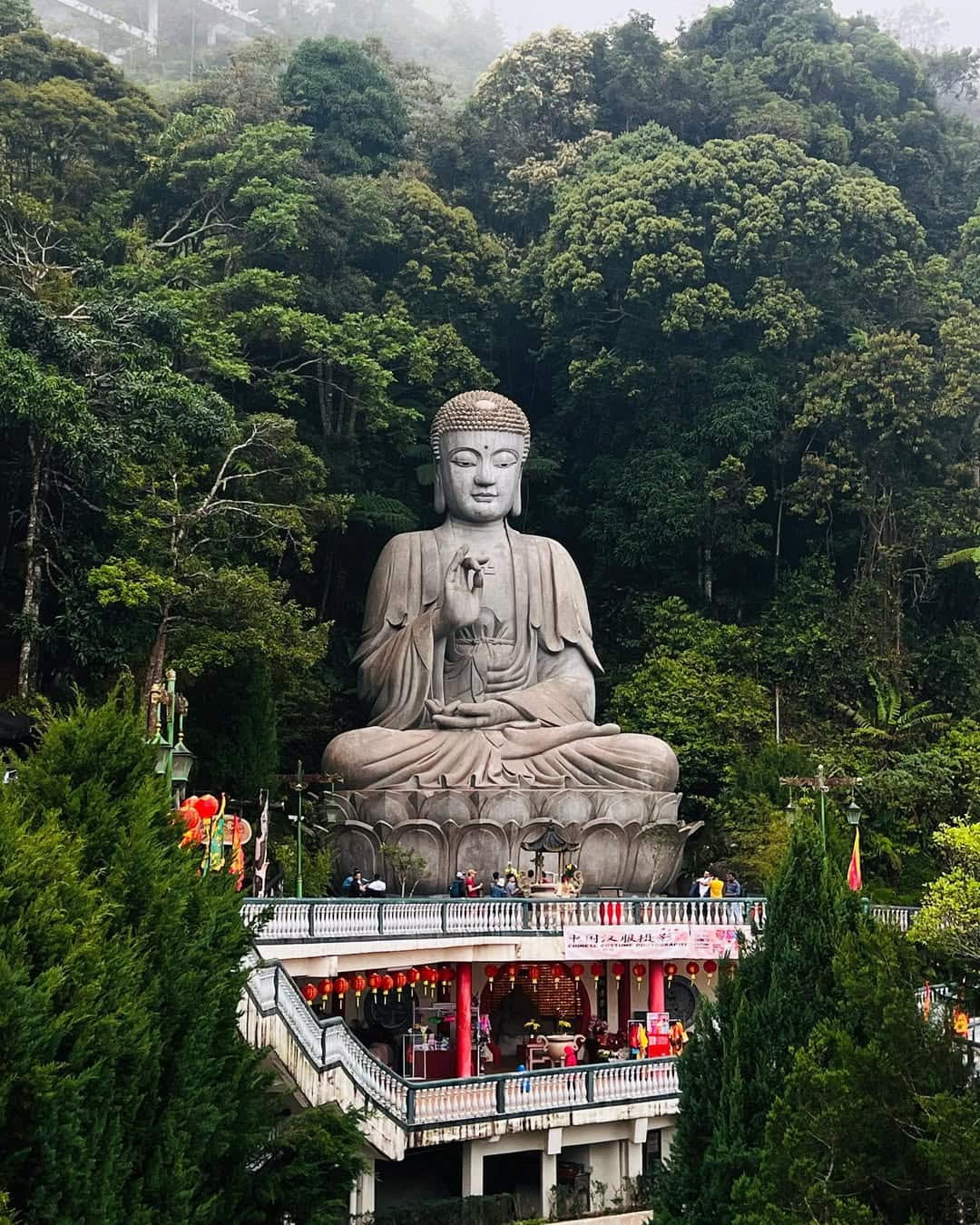
Image credit: @rekhabkumarvia Instagram
No easy feat to build, the temple opened to the public in 1994 after nearly two decades of construction. The result – a hilltop temple in the highlands that overlooks misty clouds and an untouched forest.
Address: Exit 68, Genting Sempah, 28750 Bentong, Pahang
Opening hours: 9am-6pm, Daily
10. Perak Cave Temple
40-foot tall golden Buddha statue
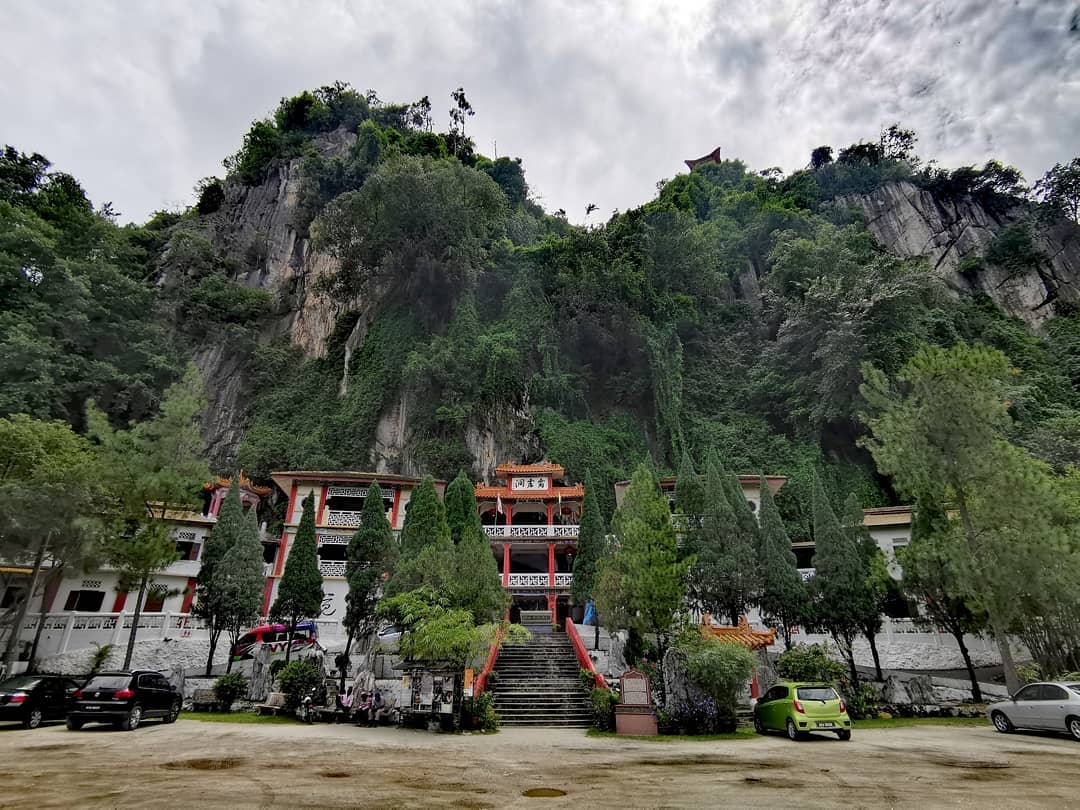
Image credit: @justin_hk via Instagram
Ipoh is home to many remarkable temples, including Perak Cave Temple, or Perak Tong Cave Temple, which is known for its unique location, hidden within a limestone cave.
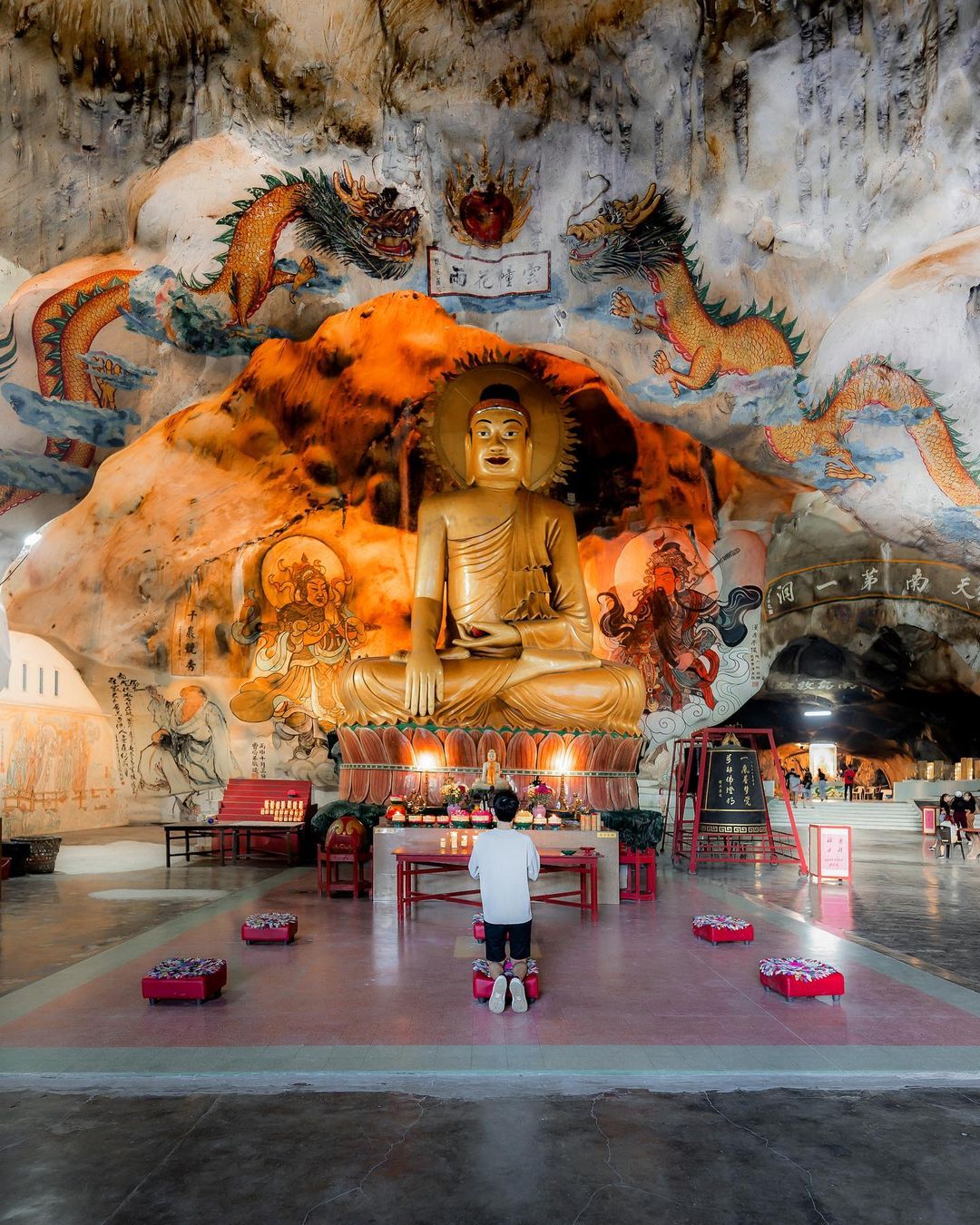
Image credit: @randonthong via Instagram
The highlights of this temple include a 40-foot-tall, gold Buddha statue inside the cave along with striking murals of deities, legends, and Chinese calligraphy. There’s also a 400-step staircase for visitors to climb and reach the pavilion to enjoy a stunning view of Ipoh city.
Address: Jalan Kuala Kangsar, Kawasan Perindustrian Tasek, 31400 Ipoh, Perak
Opening hours: 8am-5pm, Daily
11. Puu Jih Shih Temple
The largest Chinese temple in Sandakan
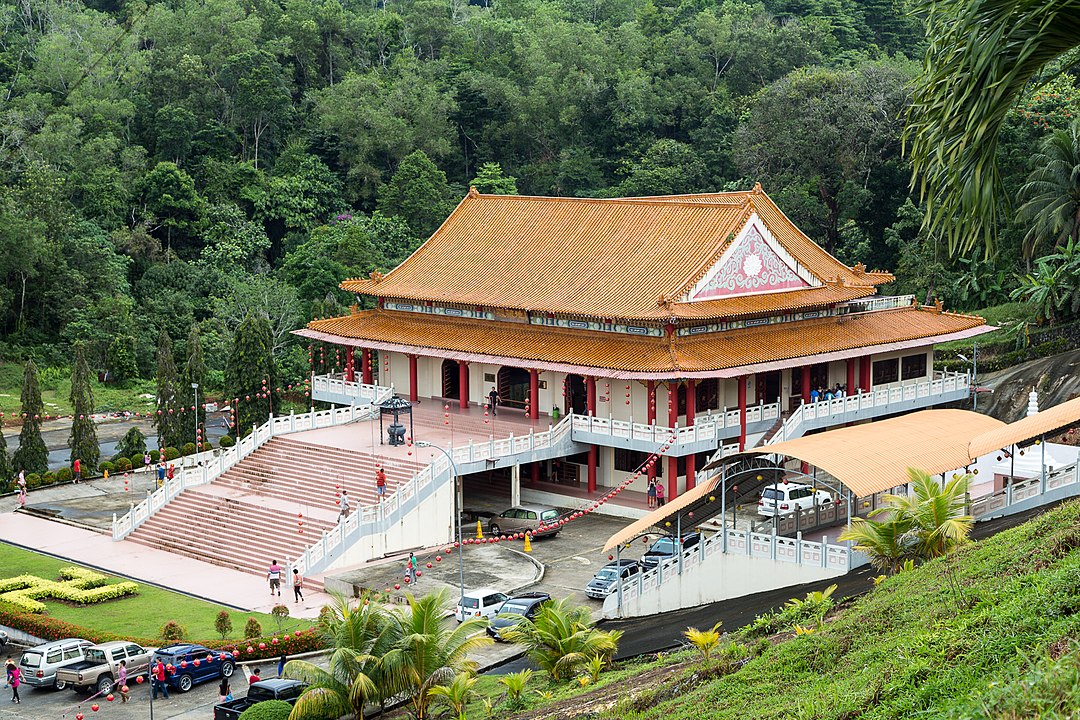
Image credit: Wikimedia Commons
Over in Sabah, Puu Jih Shih Temple has been standing as an iconic landmark ever since it opened in 1987. It’s also the largest Chinese temple in Sandakan, to date. The hilltop temple at Tanah Merah boasts vast sea and mountain views from its elevated gardens and pathways.
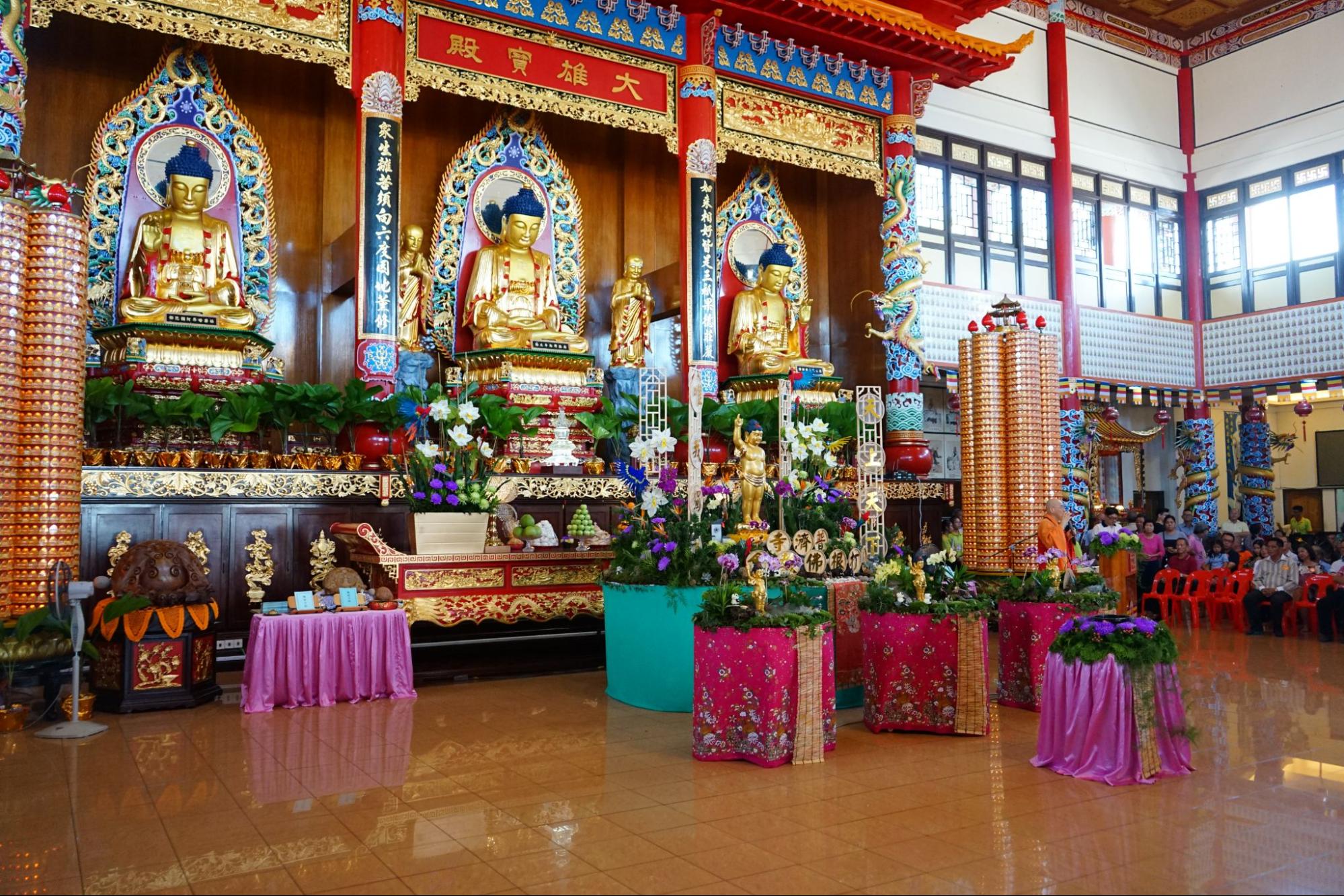
Image credit: Sin Liat Shia via Google Reviews
The interior of the temple features a vibrant mixture of fiery reds and rich golds in its decor, with exquisitely carved Buddha statues. Apart from being popular among locals, the temple also gained international exposure when it was featured in the US television series The Amazing Race 4 in 2003.
Address: Puu Jih Shih Temple, 90000 Sandakan, Sabah
Opening hours: 8am-4.30pm, Daily
12. Kek Lok Si Temple
A 7-storey pagoda with 10,000 statues of Buddha

Built in the late 19th century, Kek Lok Si Temple serves as an important pilgrimage site for Buddhists in Southeast Asia and a prominent landmark in Penang. Apart from being one of the largest and oldest temples in the state, it holds some pretty impressive features like a 7-storey Pagoda of Rama VI decorated with 10,000 alabaster and bronze statues of Buddha.

A 36.57m-tall bronze statue of the Goddess of Mercy is another main attraction at the temple. Come important Chinese festivals like the Chinese New Year, the landmark hosts light-up displays and firework shows to attract visitors near and far.
Address: Jalan Balik Pulau, 11500 Ayer Itam, Penang
Opening hours: 8.30am-5.30pm, Daily
13. Thean Hou Temple
A 6-tiered temple with a few of KL’s skyline
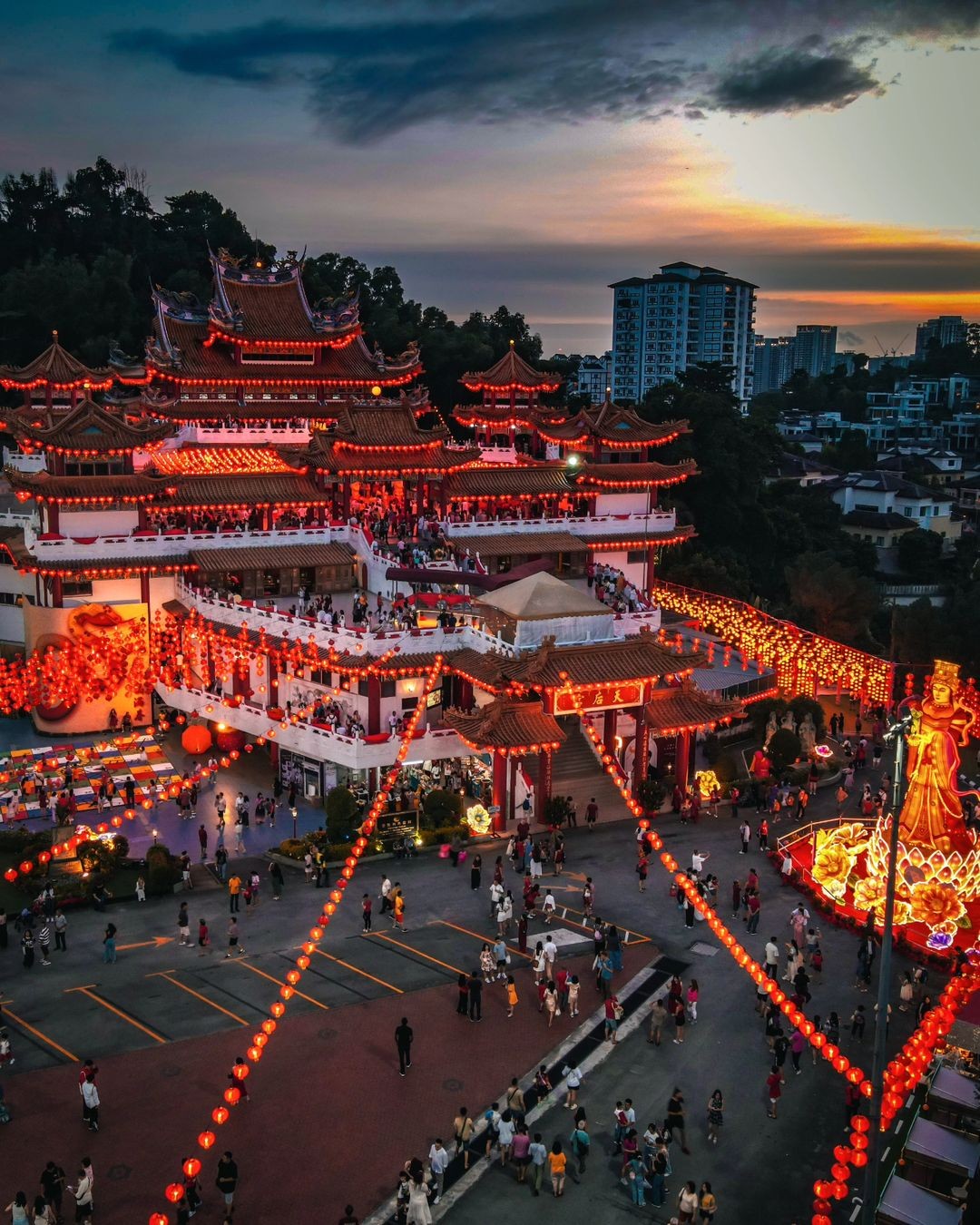
Image credit: @travelworld1604 via Instagram
Thean Hou Temple is a landmark in KL with lanterns decorating its centre court all year ‘round – think the last battle scene in Mulan with dozens of dazzling hanging lanterns. The temple is also widely considered a must-visit when you’re in the city, with jaw-dropping architecture worth spending time looking at to fully appreciate its intricate design and finishings.
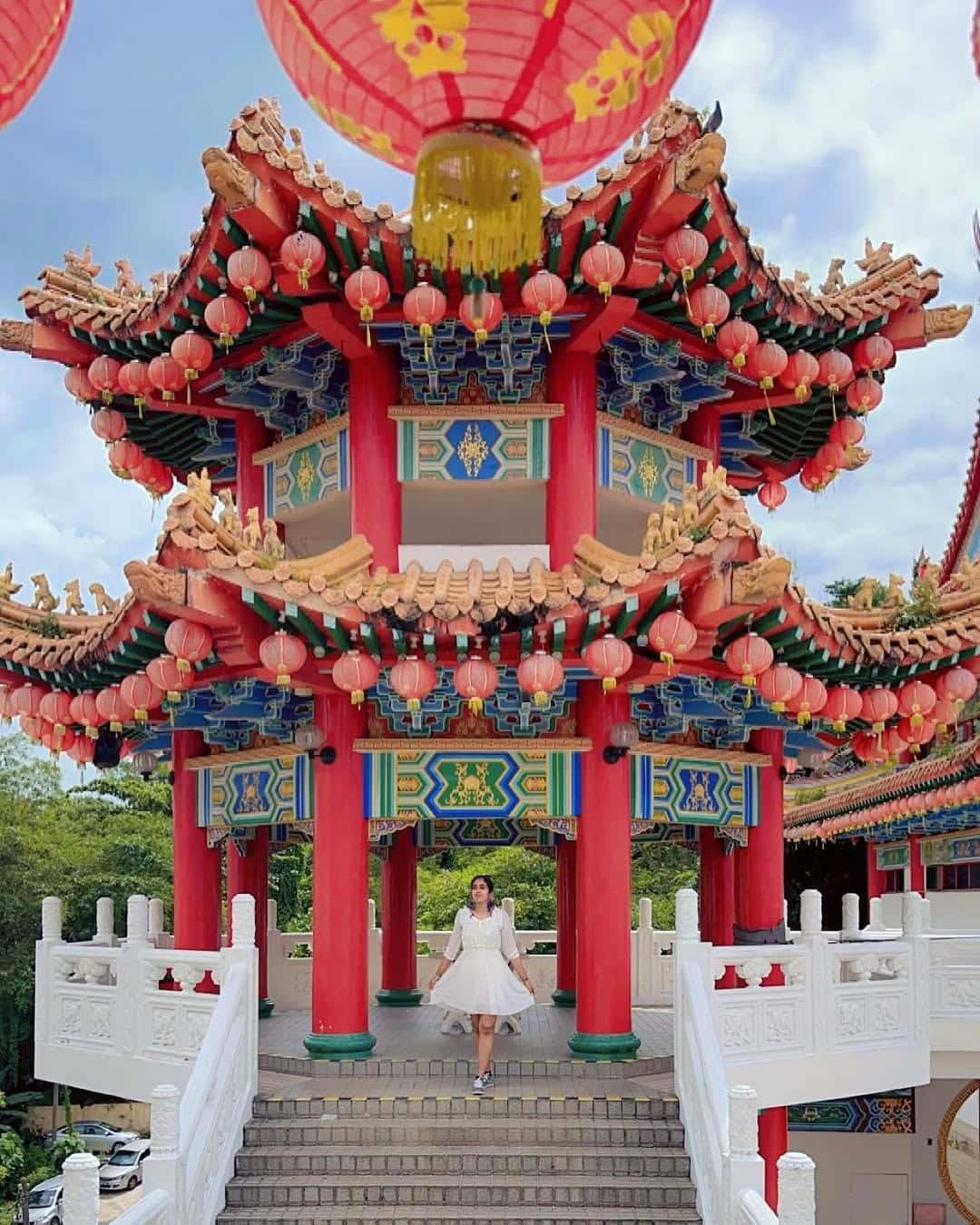
Image adapted from: @meandering_malaysian via Instagram
As one of the largest temples in Southeast Asia, the 6-tiered Thean Hou houses not just a prayer hall, but also a serene garden, stunning pagodas, and offices offering services like marriage registration for the local Chinese community.
Address: 65, Persiaran Endah, Taman Persiaran Desa, 50460 Kuala Lumpur,
Opening hours: 8.30am-8pm, Daily
Stunning Chinese temples to visit in Malaysia
Malaysia is home to plenty of Chinese temples that highlight our country’s religious diversity. For a better understanding of Buddhist religious practices in Malaysia, visit these Chinese temples and remember to be mindful of devotees during your time there.
Read more here:
- Facts about Kek Lok Si Temple in Penang
- Indian temples in Malaysia with stunning Hindu architecture
- Unique mosques in Malaysia with breathtaking architecture
Cover image adapted from: @kaionn.75 via Instagram, Putuo Village 普陀村 via Facebook, @melborneo_production via Instagram
This article was first published on 12th September 2022, and was last updated on 7th February 2025.
